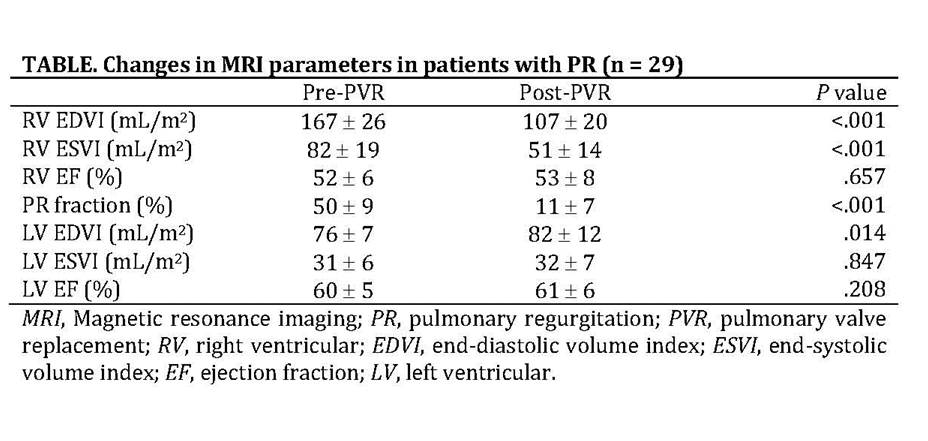초록접수 현황
| 14F-013 | 구연 발표 |
Hand-Sewn Polytetrafluoroethylene Bicuspid Pulmonary Valve Replacement: A 5-Year Experience in 119 Patients With Congenital Heart Disease
이철¹, 이창하², 곽재건²
가톨릭대학교 서울성모병원 흉부외과학교실¹, 세종병원 흉부외과²
Background : Durability of bioprosthetic valves in the pulmonary position is suboptimal. The objective of this study was to evaluate mid-term outcomes of hand-sewn polytetrafluoroethylene (PTFE) bicuspid pulmonary valve replacement (PVR).
Methods : A retrospective review of 119 patients who underwent bicuspid PVR using a 0.1 mm-thickness PTFE membrane between June 2009 and May 2014 was performed. Reintervention was defined as any surgical or percutaneous catheter procedure on the prosthetic pulmonary valve (PV). Structural valve deterioration (SVD) was defined as development of a peak pressure gradient equal to or greater than 50 mm Hg or at least a moderate amount of pulmonary regurgitation (PR) on follow-up echocardiography.
Results : The median age at PVR was 16.9 years (range, 5 months-57.1 years). Fundamental diagnoses were tetralogy of Fallot (n = 71), pulmonary atresia with ventricular septal defect (n = 21), double outlet right ventricle (n = 13), and others (n = 14). Indications for PVR were PR (n = 75), pulmonary stenosis (PS, n = 20), combined PS and PR (n = 20), and as a part of reparative surgery (n = 4). The median valve diameter was 26 mm (range, 12-30 mm). Concomitant procedures were performed in 71 patients (59.7%). There were 2 early deaths (90-day hospital mortality, 1.7%) due to ventricular dysfunction and infective endocarditis. Twenty-seven patients (22.7%) experienced postoperative complications. The median duration of intensive care unit and hospital stay was 1 day (range, 1-69 days) and 9 days (range, 6-167 days), respectively. At discharge, no patient showed significant PR or PS. Follow-up completeness was 94.0% and the median duration of follow-up was 2.6 years (range, 0.1-5.2 years). There was 1 late death due to infective endocarditis involving the prosthetic PV. Actuarial survival was 97.1 ± 1.6% at 5 years. One patient (early mortality case) underwent excision of the prosthetic PV due to infective endocarditis. Freedom from PV reoperation was 99.1 ± 0.9% at 5 years. Sixty-eight patients with PR underwent magnetic resonance imaging (MRI) preoperatively and 29 of them underwent follow-up MRI at a median of 8.0 months (range, 3.1-47.3 months) postoperatively. Follow-up MRI performed in patients with PR showed a significant reduction in right ventricular (RV) volumes without improvement of RV function (Table). Ninety-seven patients (82.9%) underwent follow-up echocardiography and the median interval to the latest echocardiographic examination was 1.8 years (range, 13 days-4.9 years). Ten patients developed SVD during follow-up and 6 of them underwent interventional catheter procedure. Freedom from PV reintervention and SVD at 5 years was 90.3 ± 3.6% and 86.2 ± 4.2%, respectively.
Conclusion : Mid-term outcomes of hand-sewn PTFE bicuspid PVR were acceptable. Long-term follow-up of this cohort is mandatory to determine the durability of this valve.
Methods : A retrospective review of 119 patients who underwent bicuspid PVR using a 0.1 mm-thickness PTFE membrane between June 2009 and May 2014 was performed. Reintervention was defined as any surgical or percutaneous catheter procedure on the prosthetic pulmonary valve (PV). Structural valve deterioration (SVD) was defined as development of a peak pressure gradient equal to or greater than 50 mm Hg or at least a moderate amount of pulmonary regurgitation (PR) on follow-up echocardiography.
Results : The median age at PVR was 16.9 years (range, 5 months-57.1 years). Fundamental diagnoses were tetralogy of Fallot (n = 71), pulmonary atresia with ventricular septal defect (n = 21), double outlet right ventricle (n = 13), and others (n = 14). Indications for PVR were PR (n = 75), pulmonary stenosis (PS, n = 20), combined PS and PR (n = 20), and as a part of reparative surgery (n = 4). The median valve diameter was 26 mm (range, 12-30 mm). Concomitant procedures were performed in 71 patients (59.7%). There were 2 early deaths (90-day hospital mortality, 1.7%) due to ventricular dysfunction and infective endocarditis. Twenty-seven patients (22.7%) experienced postoperative complications. The median duration of intensive care unit and hospital stay was 1 day (range, 1-69 days) and 9 days (range, 6-167 days), respectively. At discharge, no patient showed significant PR or PS. Follow-up completeness was 94.0% and the median duration of follow-up was 2.6 years (range, 0.1-5.2 years). There was 1 late death due to infective endocarditis involving the prosthetic PV. Actuarial survival was 97.1 ± 1.6% at 5 years. One patient (early mortality case) underwent excision of the prosthetic PV due to infective endocarditis. Freedom from PV reoperation was 99.1 ± 0.9% at 5 years. Sixty-eight patients with PR underwent magnetic resonance imaging (MRI) preoperatively and 29 of them underwent follow-up MRI at a median of 8.0 months (range, 3.1-47.3 months) postoperatively. Follow-up MRI performed in patients with PR showed a significant reduction in right ventricular (RV) volumes without improvement of RV function (Table). Ninety-seven patients (82.9%) underwent follow-up echocardiography and the median interval to the latest echocardiographic examination was 1.8 years (range, 13 days-4.9 years). Ten patients developed SVD during follow-up and 6 of them underwent interventional catheter procedure. Freedom from PV reintervention and SVD at 5 years was 90.3 ± 3.6% and 86.2 ± 4.2%, respectively.
Conclusion : Mid-term outcomes of hand-sewn PTFE bicuspid PVR were acceptable. Long-term follow-up of this cohort is mandatory to determine the durability of this valve.

책임저자: 이철
가톨릭대학교 서울성모병원 흉부외과학교실
연락처 : 이철, Tel: 02-2258-6131 , E-mail : cheul@me.com




















